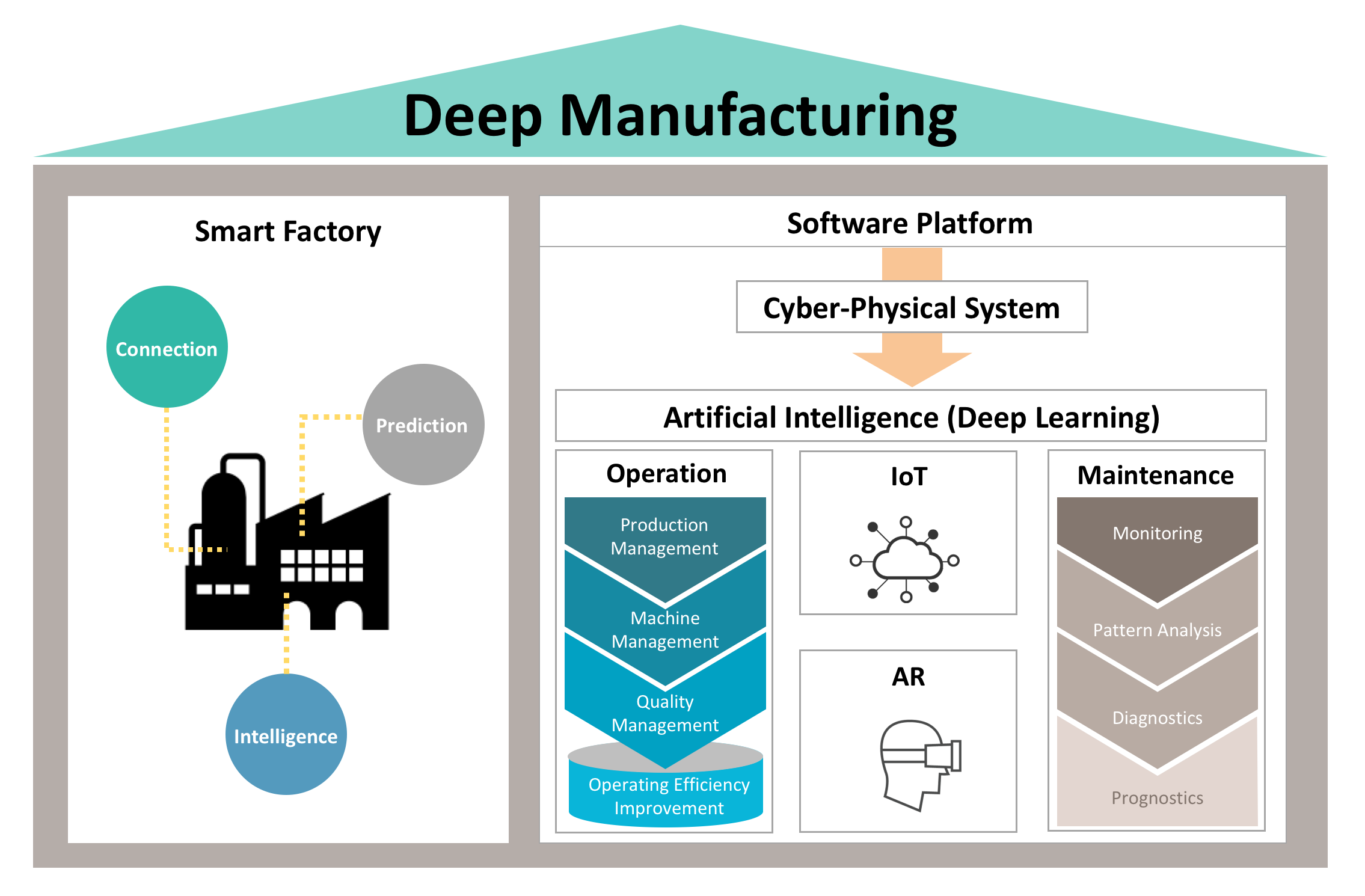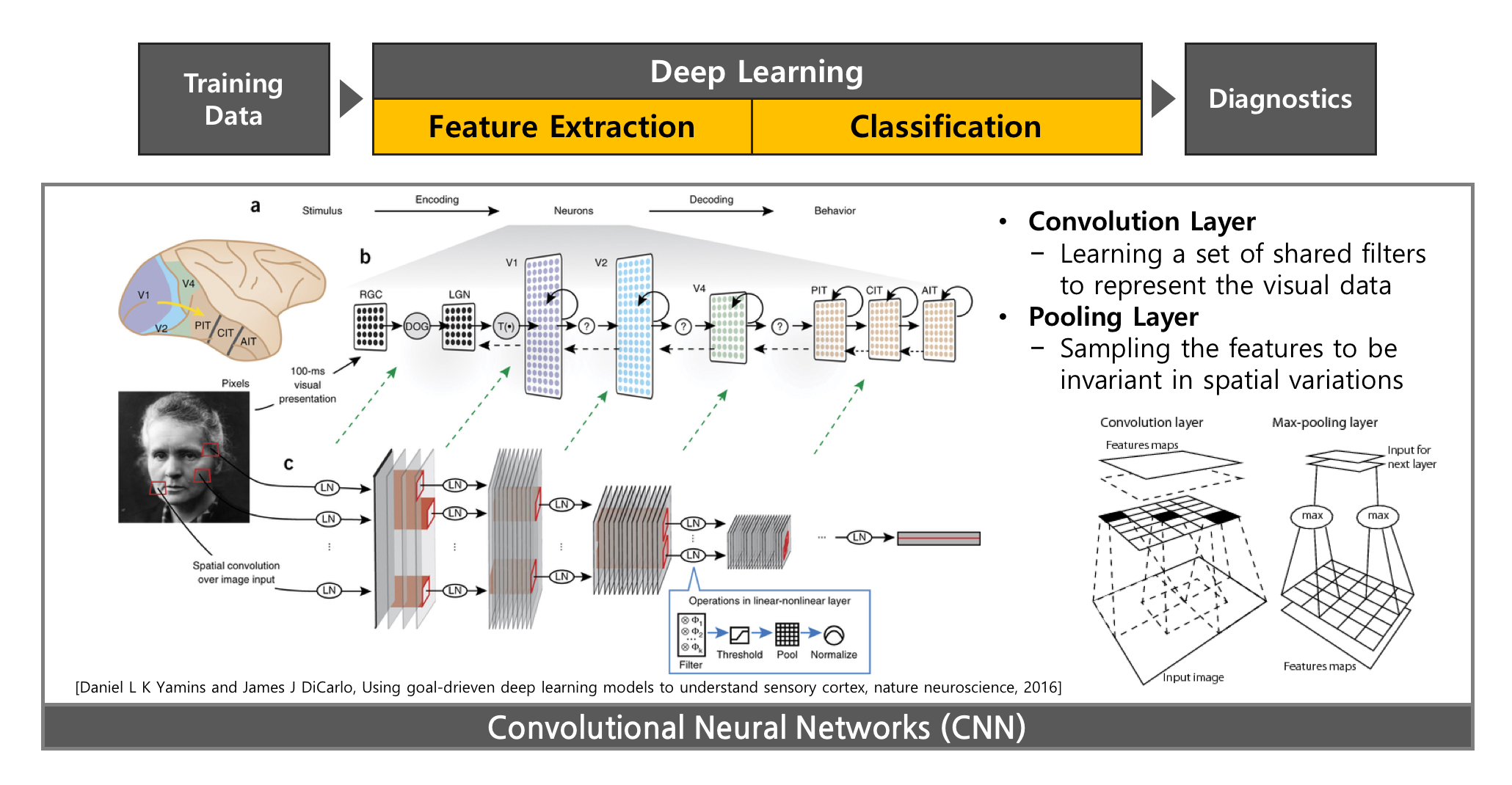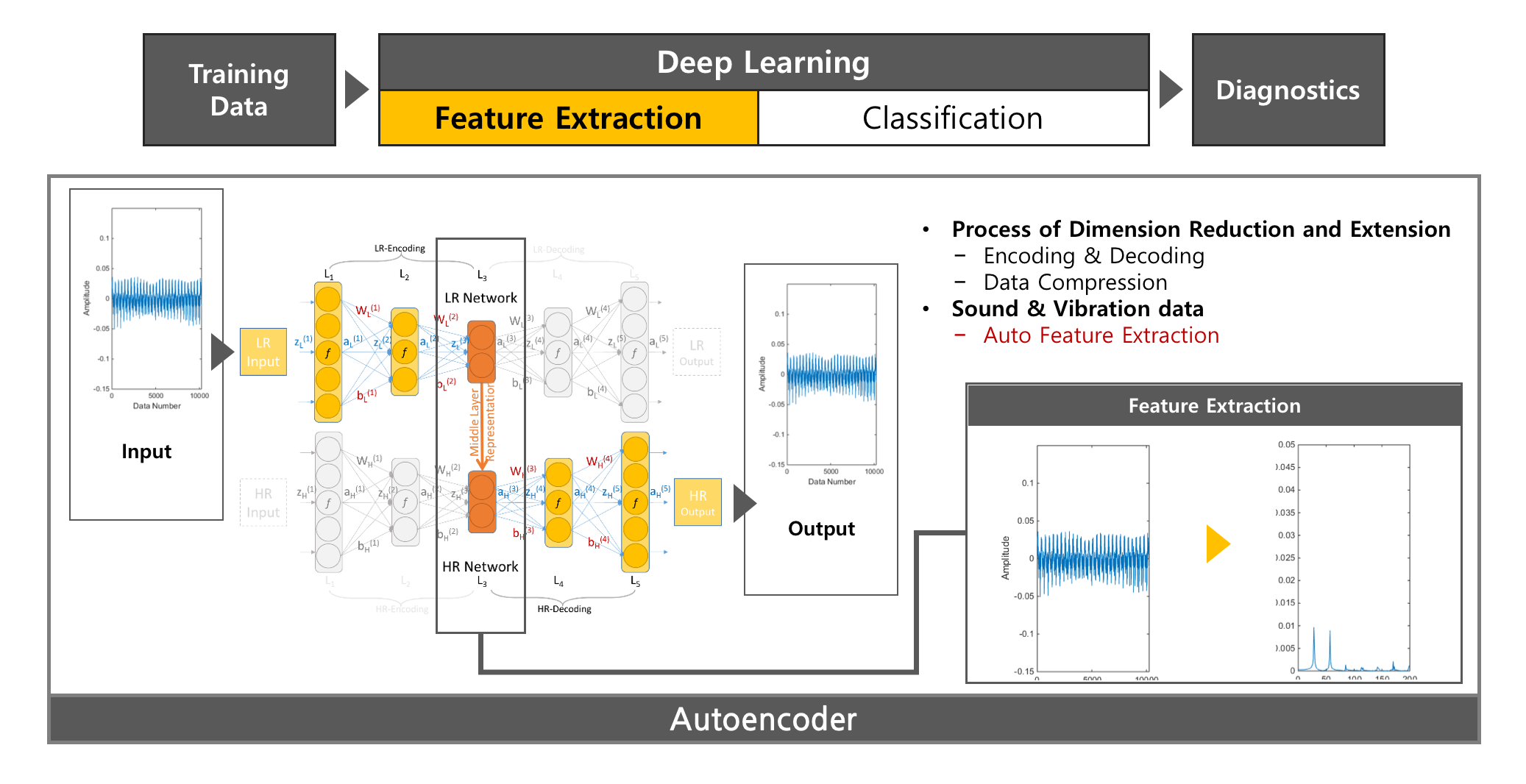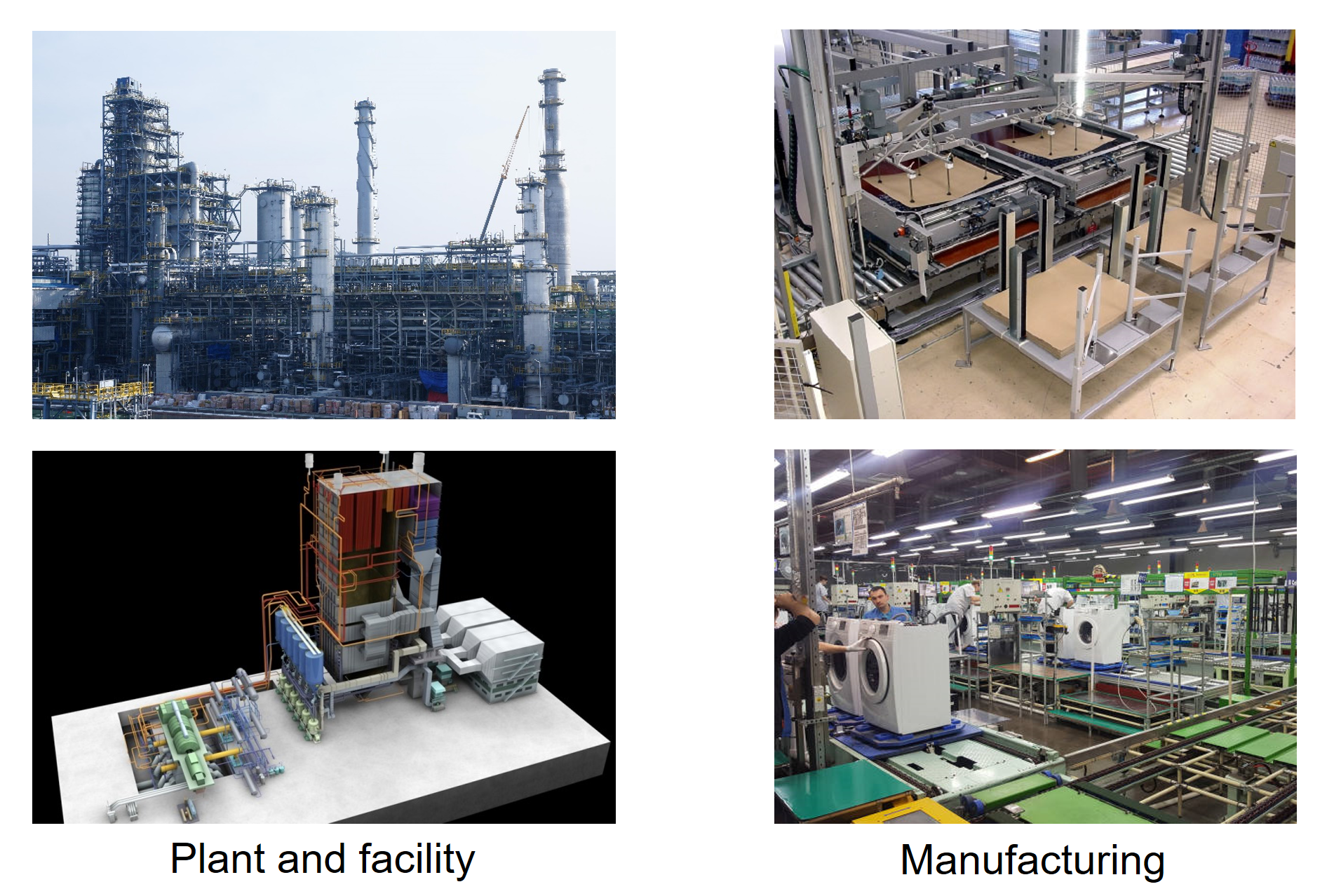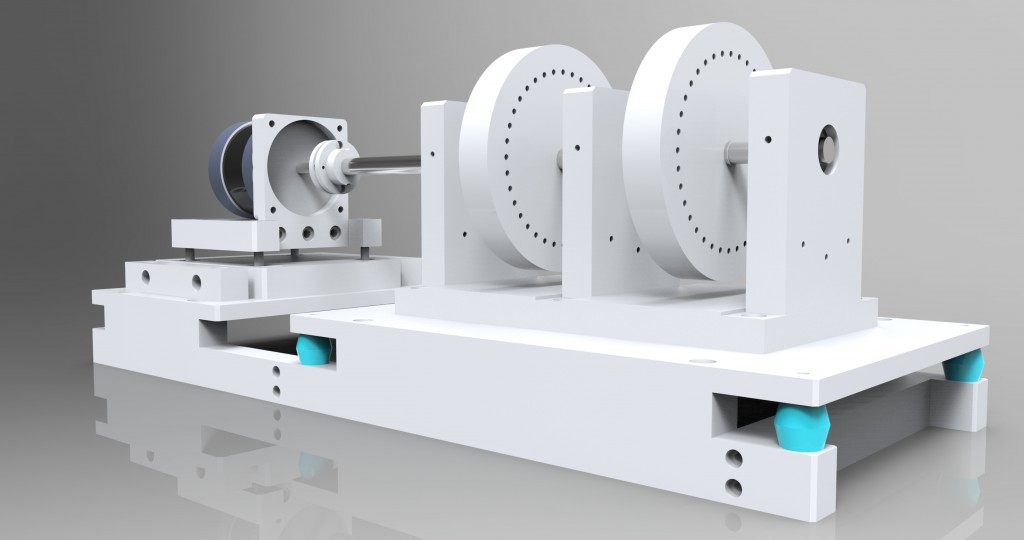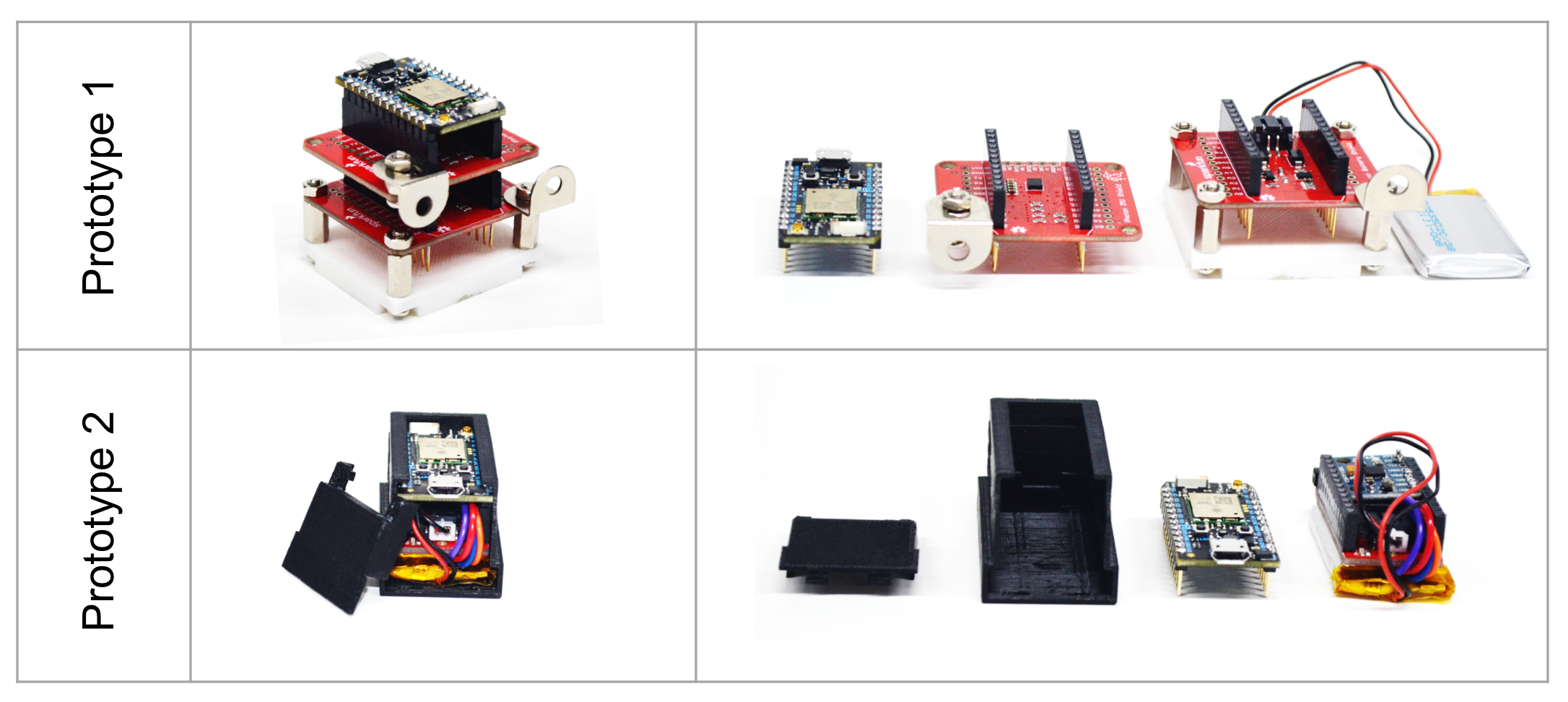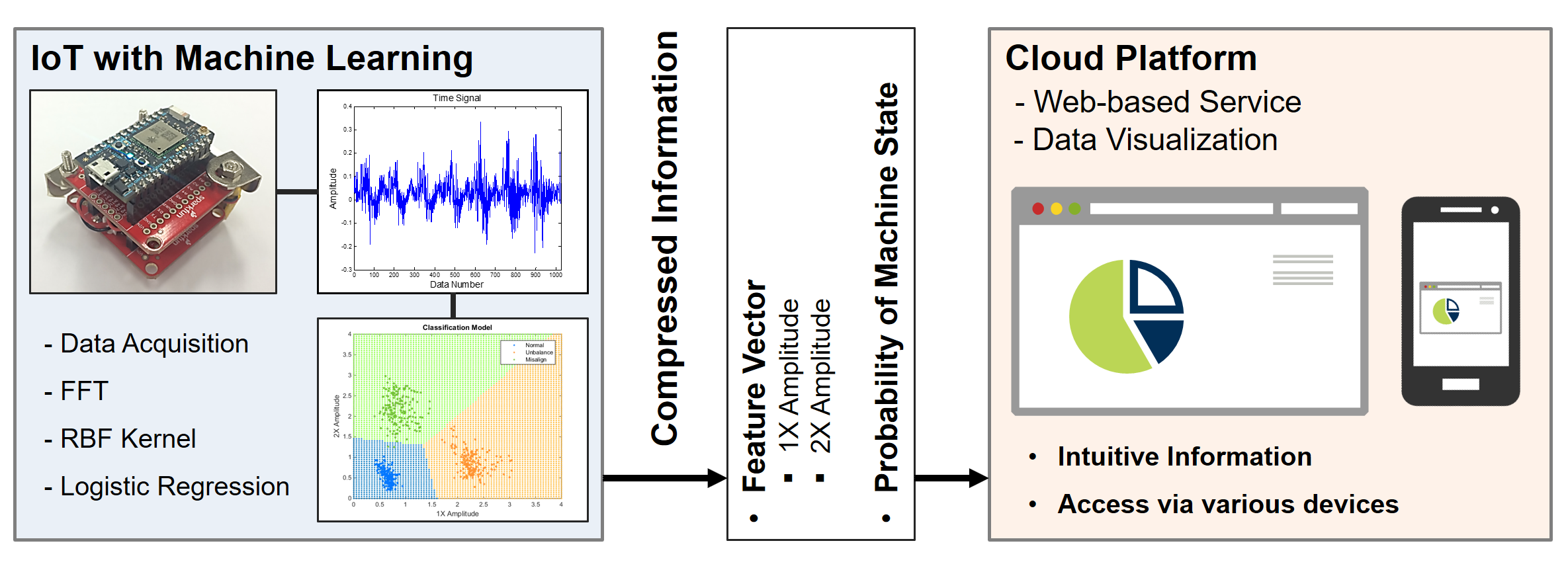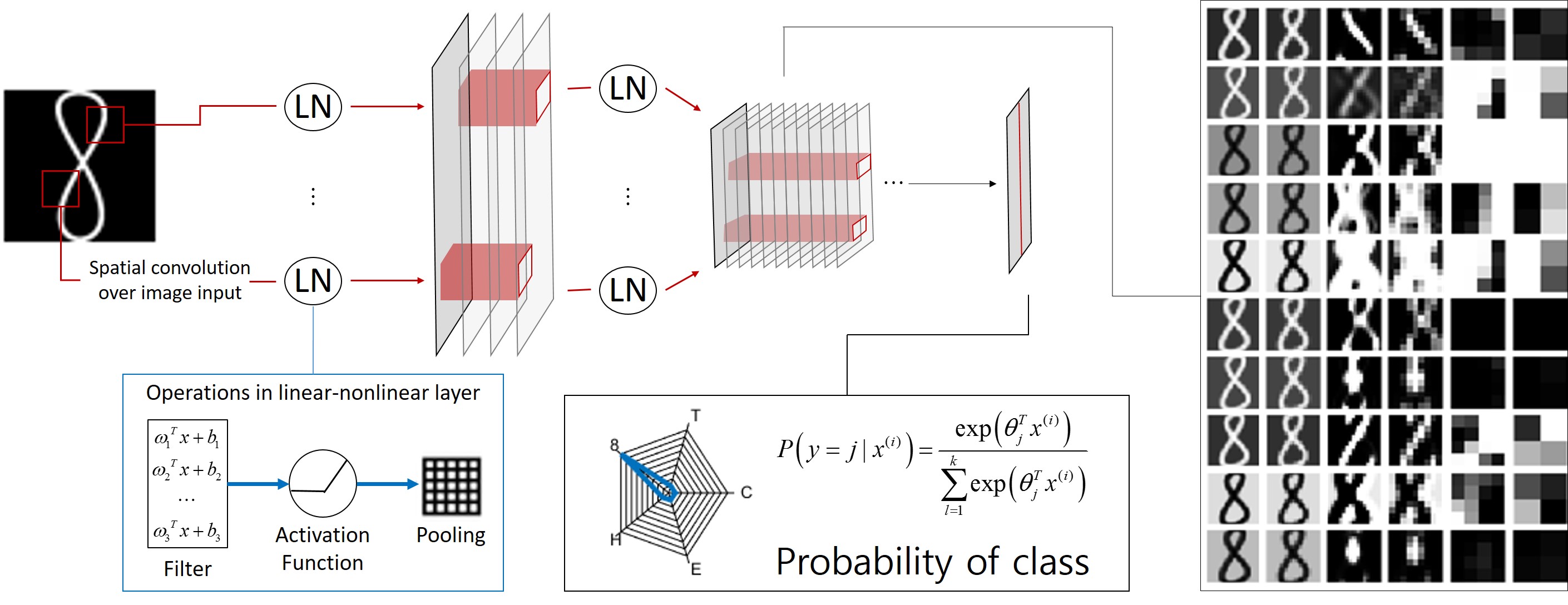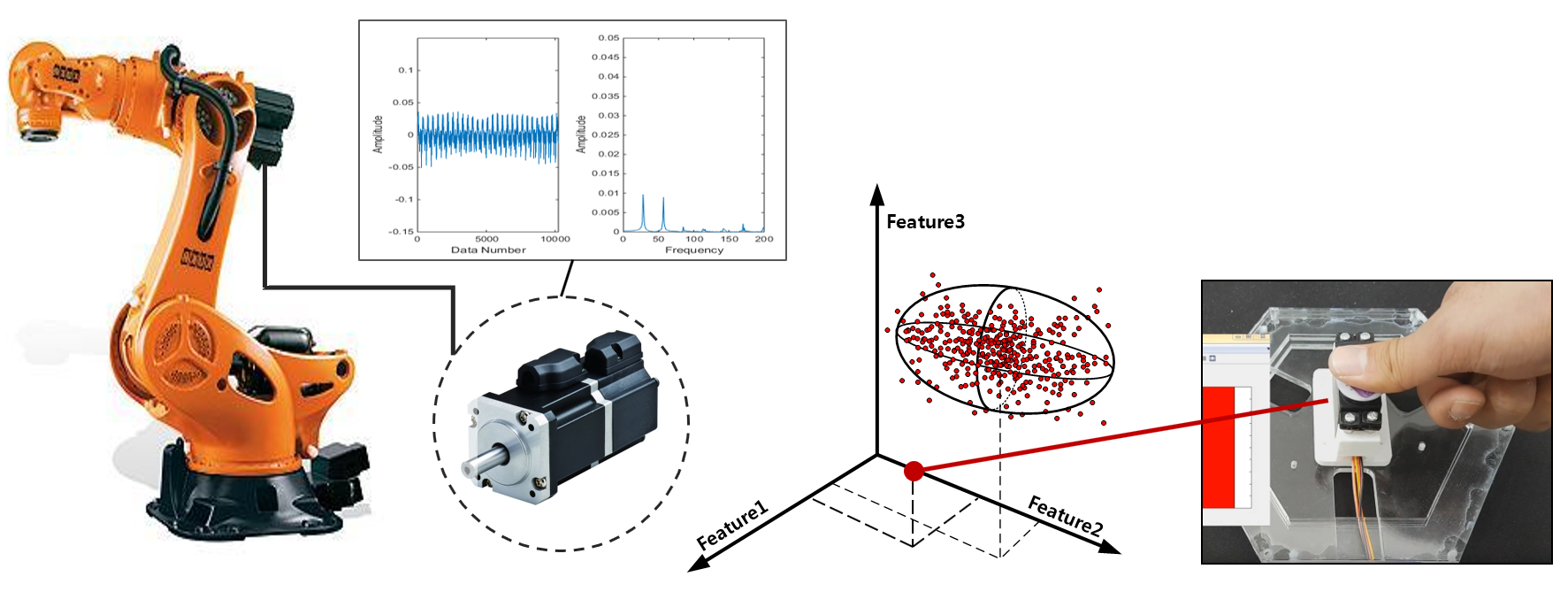IoT-based rotor PHM
The objective of this research is to improve the efficiency of data collection from many machine components on smart factory floors using IoT (Internet of things) techniques and cloud platform, and to make it easy to update outdated diagnostic schemes through online deployment methods from cloud resources. The short-term analysis is implemented by a micro-controller, and it includes machine-learning algorithms for inferring snapshot information of the machine components. For long-term analysis, time-series and high-dimension data are used for root cause analysis by combining a cloud platform and multivariate analysis techniques. The diagnostic results are visualized in a web-based display dashboard for an unconstrained user access. The implementation is demonstrated to identify its performance in data acquisition and analysis for rotating machinery.
Orbit recognition using Deep learning
Although the orbit analysis (orbit shape and size) is commonly used to diagnose rotating machinery, the diagnosis heavily depends on the expert knowledge or experience due to the difficulties of extracting mathematical features for data-driven approaches. Therefore, we propose an autonomous orbit pattern recognition algorithm using the deep learning method on shaft orbit shape images. In details, the convolutional neural network is implemented to construct weights between neurons and to generate the entire structure of the neural network. Then, the created network enables us to classify fault modes of rotating machinery via orbit images. Furthermore, we demonstrate the proposed framework through a rotating testbed.
Trainning and Classification Tool for Machine Learning
Servo Motor Diagnostics using Anomaly Detection
The advent of smart factories has resulted in the frequent utilization of industrial robots within factories to increase production automation and efficiency. Anomaly detection of failure within the robot arm is a crucial factor because such failures can be directly associated with factory productivity resulting in significant losses. Most of the failures occur within one of the core components of the robot arm, the servo motor, and thus monitoring the servo motor is important for anomaly detection of failure. However, sensor attachment to such equipment is considered difficult due to the dynamic movement of the robot arm. Therefore, in this study, we propose a methodology for the fault detection of servo motors by applying unsupervised learning to the encoder sensor data embedded in the servo motor. The effectiveness of the proposed methodology is verified through the servo motor demo experiment.
Quality Assurance System for 3D Printer
With the advance in 3D printing technologies, the applications of the technology are expanding beyond its original purpose of producing prototypes into manufacturing and medical fields. For the 3D printer to be directly applied to manufacturing sites, the quality control of manufactured products is a crucial factor. Therefore we research on a vision-based 3D printer quality assurance system. Conventional 3D printers utilize an open loop control method, and thus we have approached the problem through a feedback control method based on serial communication to synchronize the input signals and the camera images. From the camera image, the quality of the product is estimated by measuring the processed error per each layer through image processing technology.
Condition Monitoring of multilayer Stacker
The key manufacturing process in high capacity MLCC (Multi-layer Ceramic Capacitor) is a stacking process. Since MLCC stacking process is extremely important to a final product quality, an accurate monitoring system should be established.
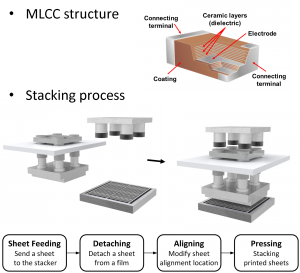
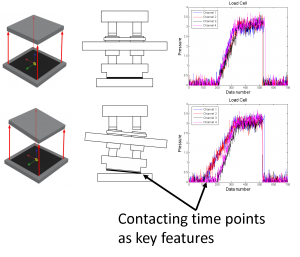
Reveal Unobservable Machine Condition using Hidden Markov Model
Online condition monitoring and diagnosis systems play an important role in the modern manufacturing industry. HMM is combined with statistical process control to quickly detect the occurrence of an unknown fault (early machine-failure detection). This method allows the state space of a hidden Markov model to be adjusted and updated with the identification of new states. Hence, the online degradation assessment and adaptive fault diagnosis can be simultaneously obtained. Experimental results in a turning process illustrate that the tool wear state can be successfully detected, and previously unknown tool wear processes can be identified at the early stages using the MHMM.

